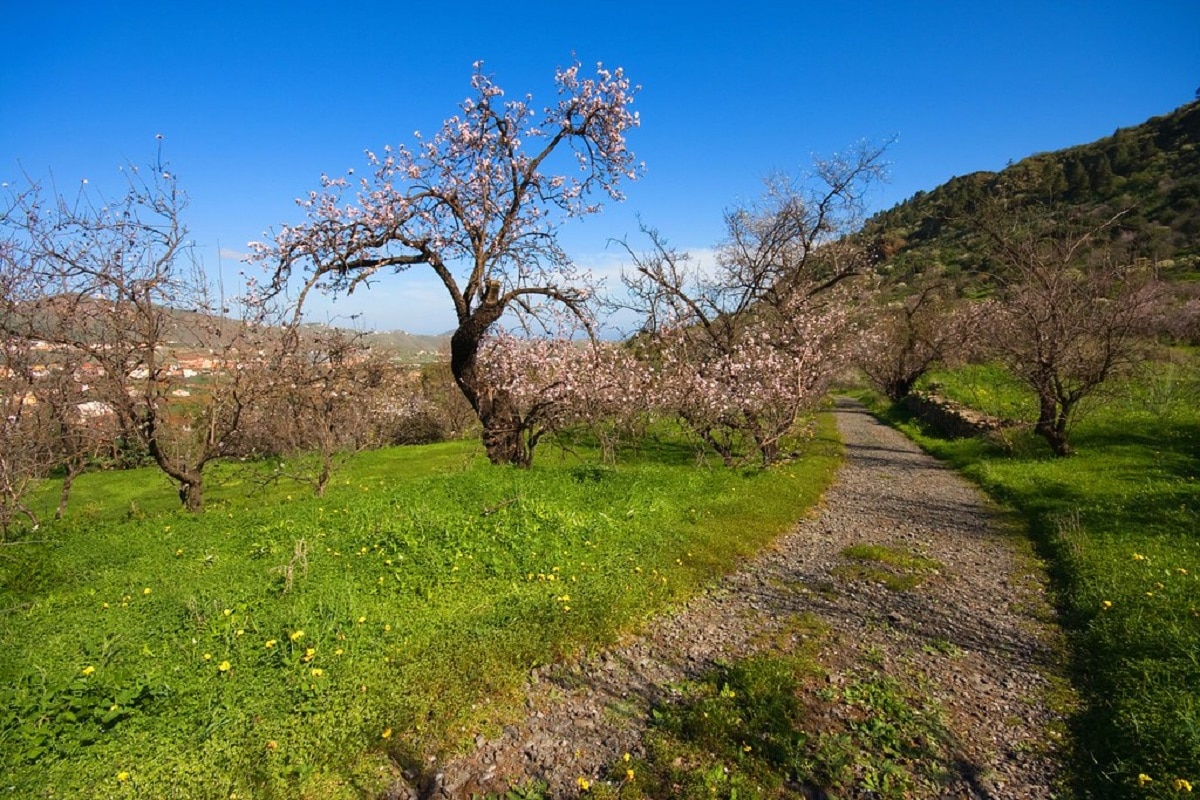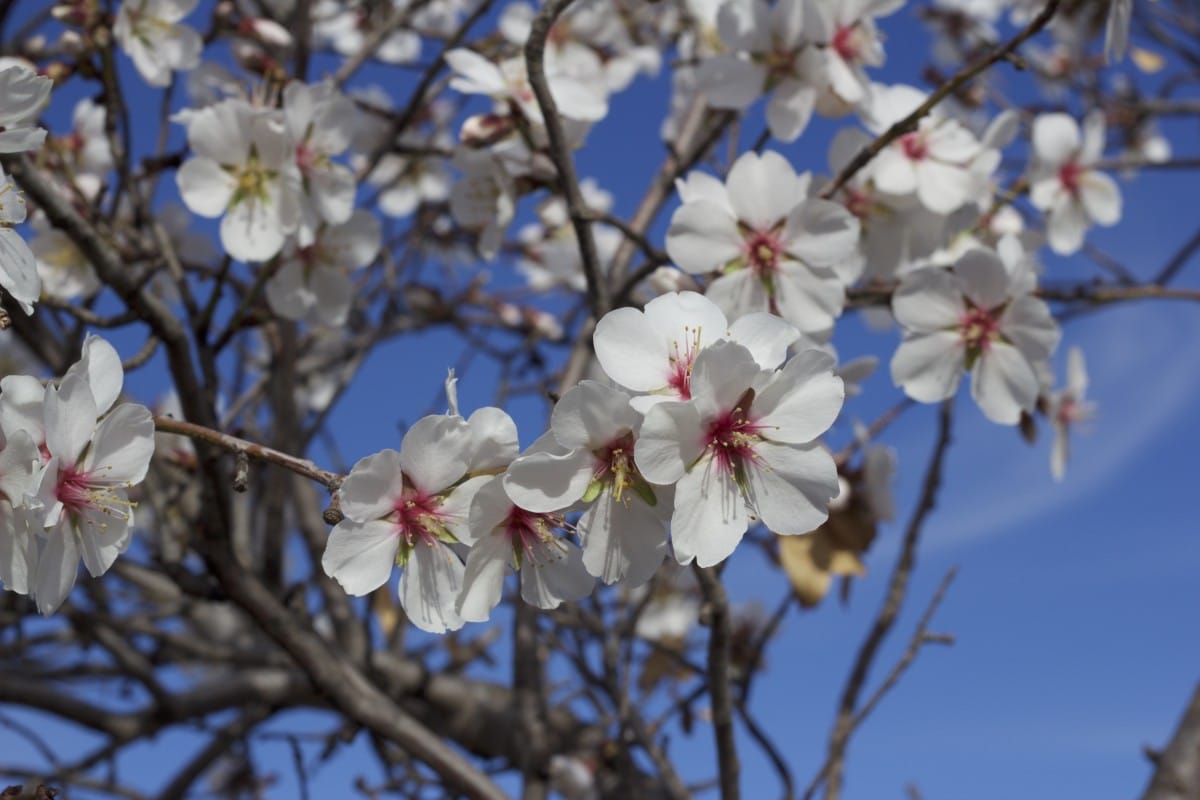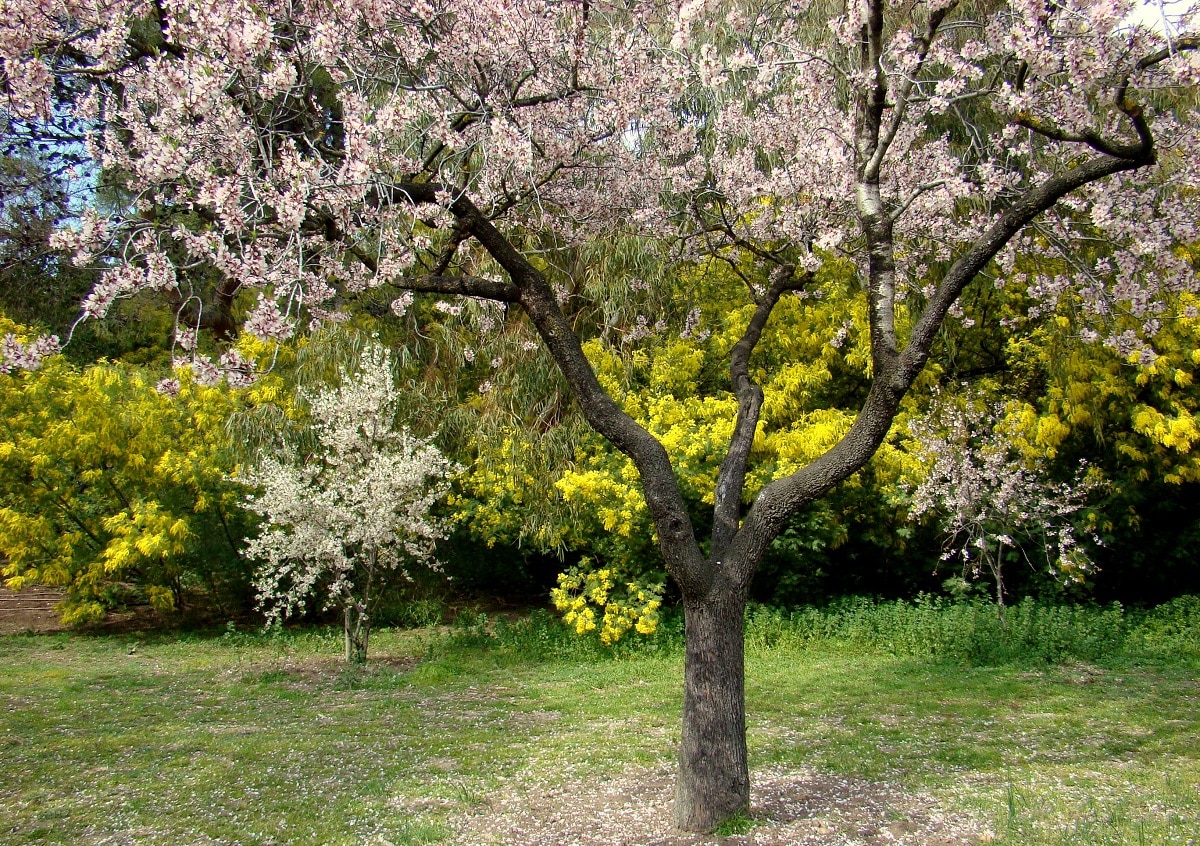
The almond tree is a fruit tree that blooms early, which makes you fear spring frosts. However, some resistant varieties can produce in temperate climates. Its almonds can be eaten fresh, or kept dry, in the same way they are an interesting source of protein, as well as fiber and magnesium. The almond tree is a small, robust tree, with an erect habit, which becomes more rounded with age, reaching an adult height of 5 to 6 m.
Its leaves are lanceolate and very narrow, its flowers reaching the tree early (from February in the northern hemisphere). They are pink or white in color, and sprout from the tree's still bare branches. They fear spring frosts, in fact they fall around -2 to -3 ° C, so knowing when to plant the tree is essential. The almond tree grows in all well-drained soils, even calcareous, except too humid or clayey.
Types of almond trees
There are about thirty of them. They are distinguished mainly by the hardness of the shell. The softer, the more easily it cracks to release the seed. Although most almond trees are grown in Mediterranean regions, a large part are self-sterile, so it is necessary to plant two different varieties with a distance of 15 meters from each other in your garden.
For its early flowering, fears late frosts, which can prevent good fruiting. Therefore, late-flowering almond trees are recommended for planting in regions with a continental climate.
- All In One: Tender almond with a very brittle shell. Self-fertile.
- ferraduel: Hard almond. Very late flowering.
- ferragnes: Hard almond. Same flowering as 'Ferraduel' with which it is associated for pollination.
- Laurane: Semi-hard shell, small almond. Self-fertile.
- Dwarf almond: Dwarf variety, which can be grown in pots.
- Almond Princess: earliest flowering from mid-February to late March. Very productive
When to plant the almond tree?

When is the almond tree to be planted? It is recommended between summer and autumn, winter is short since it blooms in February. It does not have to be buried deep and keep the graft site on the surface. In moist or poorly drained soil, it can be planted in a mound. It is a tree that needs short winters and hot summers. It accepts any well-drained soil: it can withstand drought, but it does not tolerate any excess water in the soil.
It can withstand temperatures of -2 to 4 ° C and its tender fruits are destroyed as soon as the temperature drops below 0 ° C. In cold regions, it is essential to plant the almond tree in a sunny and protected place. The fruits are harvested in late August to early September.
How to plant an almond tree
The almond tree, whether it is bought bare root or in a pot, is planted from October to April. If it cannot be planted within 8 days, it is recommended that it be left in a shady spot in your garden. To plant it, follow these steps:
- To loosen the soil, dig a hole about 50-60 cm deep and 80-100 cm wide. Remove stones, weeds, and roots.
- Fill the hole halfway with soil and composted manure (two handfuls) to mix with the soil (1 to 2 scoops).
- To keep trees healthy, trim the root ends of the fruit trees.
- Fill the planting hole with compost (a handful to mix with the soil) and remember to anchor the tree to keep it upright.
- Place the neck of the fruit tree at ground level (identified by the lip at the root-trunk junction), then fill the hole.
- Prune the branches of the almond tree to about 25-30 cm long from the trunk, preferably above a bud placed towards the outside of the branches and keep only the 3 to 5 branches best placed.
Maintenance of the almond tree
The year after you have planted your almond tree, you should let it grow naturally to give it time to acclimatize. This fruit tree blooms in one-year wood and is pruned as little as possible. Every year a treatment can be carried out at the end of winter, then after flowering, to a preventive treatment, to avoid the development of diseases such as moniliosis.
To preserve the fertility of the soil, each year it is advisable to make a contribution of organic fertilizer in autumn, followed in spring by a contribution of special fertilizer for fruit trees.
Almond tree diseases

Almond trees are not only beautiful deciduous trees, but also nutritious and delicious, leading many gardeners to grow them. However, even with the best care, they are susceptible to their own illnesses. When treating diseased almond trees, it is important to recognize the symptoms to identify which disease is affecting the tree.
Band canker
It is a fungal disease that was previously very rare. Today, commercial farmers are particularly affected, as signs of almond disease appear in natural holes in trees and in pruning wounds on branches. They are especially common after a storm, when the spores are distributed not only by the wind, but also by the splashes of rain.
Ceratocystis canker
Commercial almond growers are more likely to be affected by Ceratocystis canker. It is also known as the "shaker's disease."as it is frequently found in crop walker injuries. Fruit flies and beetles are attracted to the tree's wound and spread fungal disease.
The bullet hole disease
Attacks almonds late in the growing season and manifests as small black lesions on the leaves. The lesions can also damage the nuts and, although they are unattractive, they do not affect the flavor. The nuclei of the spots rot as they expand, leaving a hole that resembles a pellet target.
It is very easy to plant an almond tree, if it is done following the steps that we have indicated.